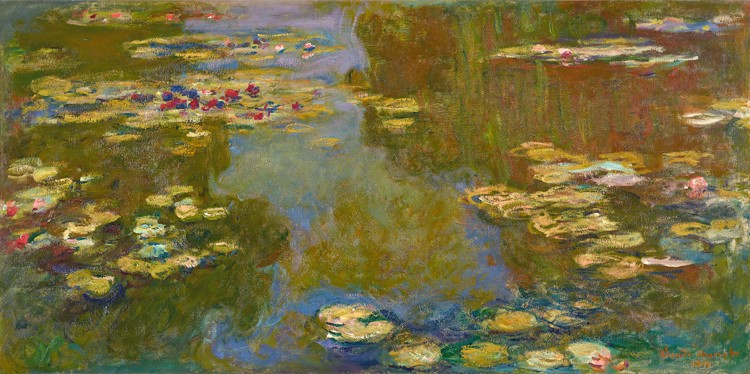One gallery in Seeing Nature is dedicated to Jan Brueghel the Younger’s The Five Senses series. Painted in 1625, this series is a close copy of five paintings by Brueghel’s father, Jan Brueghel the Elder (who painted the backgrounds) and Peter Paul Rubens (who painted the figures) in 1617–18, now in the Museo del Prado in Madrid. Each painting focuses on one of the five senses, providing a platform for visitors to consider their own encounters with nature. Today we focus on Smell.

Jan Brueghel the Younger, The Five Senses: Smell, c. 1625. Oil on panel, 27 5/8 x 44 5/8 in. Paul G. Allen Family Collection
A cultivated garden overflows with the most popular plants of the early seventeenth century, including the exotic Crown Imperial tulip, irises, lilies, narcissus, anemones, hollyhocks, and carnations, all at the peak of beauty and fragrance. In the foreground, Cupid presents a sweet-smelling bouquet to Venus. Curled up nearby is a genet, a musk-producing mammal, as well as two guinea pigs—reminders that not all smells are pleasant.
In fact, the painting Smell features not only a cultivated garden overflowing these potent flowers, but installed in our museum, it also beautifully relates to the Phillips’s multisensory Laib Wax Room, a permanently-installed chamber lined with fragrant beeswax created by the German artist Wolfgang Laib.


